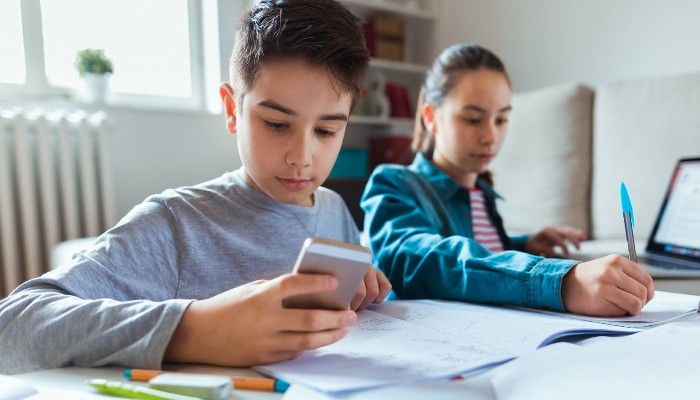
The Educational Impact of Videos: Enhancing Learning for Children
June 21, 2023In today’s digital age, videos have become an integral part of our lives, with their impact reaching various aspects, including education. The use of videos as an educational tool has gained significant popularity due to their ability to enhance learning experiences for children. This article explores the educational impact of videos and how they contribute to the overall development of children’s knowledge and skills.
In the digital era, educational videos have emerged as a powerful tool to engage and educate children. With their visually captivating nature and interactive features, videos provide a unique learning experience beyond traditional teaching methods. Let’s explore the various ways in which videos positively impact children’s education.
Table of Contents
Visual Engagement and Retention
Visual content is highly effective in capturing children’s attention and maintaining their focus. Educational videos utilize captivating visuals, animations, and graphics to present information in an engaging manner. By combining images, text, and audio with an online video editor, videos create a multisensory experience that enhances children’s understanding and retention of educational concepts.
Multisensory Learning Experience
Videos offer a multisensory learning experience, stimulating multiple senses simultaneously. By incorporating visuals, sounds, and sometimes even tactile elements, videos provide a holistic approach to learning. This multisensory experience helps children better comprehend and internalize information, making the learning process more enjoyable and effective.
Stimulating Creativity and Imagination
Videos have the power to spark children’s creativity and imagination. Animated characters, vibrant settings, and imaginative storytelling inspire children to think creatively and explore their own ideas. Educational videos that encourage open-ended thinking and problem-solving can unlock a child’s imaginative potential and foster innovative thinking skills.
Interactive and Collaborative Learning
Many educational videos incorporate interactive elements that allow children to actively participate in the learning process. Features like quizzes, puzzles, and virtual simulations enable children to engage with the content actively. Moreover, videos can facilitate collaborative learning by encouraging group discussions and sharing ideas among children.
Accessible and Diverse Educational Content
Videos provide a vast array of educational content that is easily accessible to children. Whether it’s historical documentaries, scientific explanations, or language lessons, videos cover various subjects and topics. This accessibility ensures that children have access to diverse knowledge and can explore their areas of interest freely.
Enhancing Comprehension and Conceptual Understanding
Complex concepts and abstract ideas can be challenging for children to grasp through traditional teaching methods alone. However, videos offer visual representations and real-life examples that simplify complex topics and enhance comprehension. The combination of visuals, narration, and explanatory animations helps children develop a deeper understanding of concepts.
Fostering Critical Thinking and Problem-Solving Skills
Educational videos often present children with problems, scenarios, or puzzles that require critical thinking and problem-solving skills to solve. By engaging children in analytical thinking, videos cultivate their ability to reason, evaluate evidence, and find creative solutions. These skills are essential for academic success and future endeavors.
Addressing Different Learning Styles
Every child has a unique learning style and preference. Videos cater to different learning styles by presenting information through visual, auditory, and kinesthetic means. Visual learners benefit from the graphical representation, while auditory learners grasp information through narration and sound. This adaptability ensures that children with diverse learning styles can engage with the content effectively.
Cultivating Cultural Awareness and Empathy

Educational videos can introduce children to different cultures, traditions, and perspectives from around the world. Through videos, children gain exposure to diverse experiences, fostering cultural awareness, and empathy. This exposure helps children develop a global perspective and appreciate the richness of human diversity.
Encouraging Self-paced Learning
One of the significant advantages of educational videos is that they allow children to learn at their own pace. Unlike traditional classroom settings, videos allow children to pause, rewind, and replay content as needed. This self-paced learning approach enables children to grasp concepts fully before moving on to the next topic.
Overcoming Language and Communication Barriers
Videos can break down language and communication barriers that often hinder learning. Visual representations, subtitles, and translations in educational videos make content accessible to children with different language backgrounds. This inclusivity ensures that language barriers do not limit a child’s access to educational resources.
Promoting Positive Behavior and Values
Educational videos can serve as a medium to instill positive behavior and values in children. By portraying moral dilemmas, teaching empathy, and highlighting social skills, videos can shape children’s ethical development. Carefully curated content that promotes kindness, honesty, and respect can positively influence children’s behavior and character.
Ethical Considerations and Screen Time Management
While educational videos offer numerous benefits, it is essential to address ethical considerations and manage screen time effectively. Parents, caregivers, and educators should ensure that the content aligns with educational objectives and is age-appropriate. Balancing screen time with other activities, such as outdoor play and social interaction, is crucial for children’s overall development.
Conclusion
In conclusion, educational videos have a profound impact on children’s learning experiences. Through their visual engagement, multisensory approach, and interactive nature, videos enhance comprehension, foster critical thinking, and stimulate creativity. By providing accessible and diverse educational content, videos empower children to explore various subjects and topics independently. However, it is essential to navigate the ethical considerations and manage screen time responsibly. Incorporating educational videos into children’s learning journey can unlock their full potential and pave the way for a brighter future.











